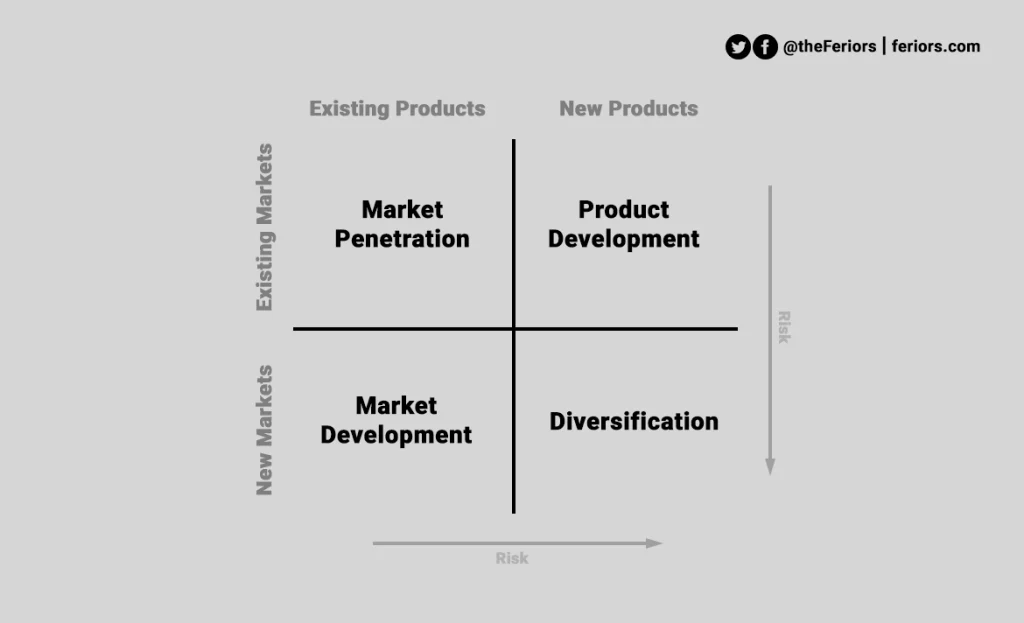What is Expansion Strategy
Expansion strategy is a corporate level strategy that centered on expanding the business unit to widen the scope in different ways. The expansion strategy includes various ways but can be categorized into three main types include Intensive growth, Diversification growth, and Integrative growth strategy.
- Intensive strategy is the expansion strategy that is growing the business by strategies that are related to the products and markets.
- Diversification strategy is a strategy that focused on expansion into a new business unit which related or not related to the existing business units.
- Integration strategy is a strategy that focused on expansion into the related business by horizontal integration and vertical integration.
As you can see, the main objectives of the expansion strategy are to increase revenue, increase market share, find more customers, or optimize costs to grow the business stronger in the future. The expansion strategy is also known as the growth strategy, so you can determine what is the right strategy by comparing the current company’s situation with the Ansoff matrix to expand the company with the intensive and diversification strategy.

Intensive Strategy
Intensive strategy is the expansion strategies that are related to the markets and products (or business unit).
- Market penetration focused on selling more existing products to existing markets.
- Market development focused on selling existing products to new markets.
- Product development focused on developing new products and selling to existing markets.
Market Penetration
Market penetration is an expansion strategy that focused on selling more current products to existing markets or finding new customers within the existing markets. The market penetration strategy often involves encouraging current customers to buy more each time they go to the store or buy more frequently.
The market penetration strategy is the easiest expansion strategy for most company that looks for growth opportunity since the selling of the existing products to existing customers is much easier and lower risk than developing a new market or product.
Market Development
Market development strategy focused on selling existing products to new customers or into new markets internationally. The company can be accomplished the market development strategy in any of the following ways:
- Exploring new customers in new geographies.
- Exploring new customer segments.
- Develop new distribution channels to reach more customers.
Product Development
Product development is an expansion strategy that grows the market share by developing new products and selling to existing markets. This can be as simple as a new ice cream flavor or a new flavor of Pepsi cola.
The advantage of a new product development strategy is the trust and relationship between the existing customers and the brand which makes the customer easily go through the product adoption process and adopt this product.
Diversification Strategy
Diversification strategy is an expansion strategy that can be accomplished by offering a new product to an unexplored new market. The new business unit may or may not be related to the current business. The diversification expansion holds a higher risk compared to the intensive strategies but can have a huge reward on the success.
The diversification strategy can be divided into two types:
- Concentric diversification focused on expansion into a new business (selling new products to new markets) that are related to the current businesses, products, markets, or activities.
- Conglomerate diversification is a contrast of the concentric, the conglomerate diversification is focused on expansion into unrelated businesses, products, markets, or activities.
Integration Strategy
Integration strategy is an expansion strategy that the organization focused on expansion into the related business. An integration strategy does not exist in the Ansoff product-market matrix clearly, but sometimes the integration strategy considering as 2 of 4 diversification strategies.
The strategy for the integration includes horizontal integration and vertical integration.
- Vertical integration strategy is an expansion strategy that expands the business into supply chains (the backward integration) or to distributors channel (the forward integration) by acquisition or development of new businesses.
- Horizontal integration strategy is a strategy that the company expansion by take-over or acquiring other similar businesses in the industry.



